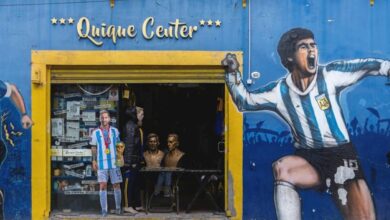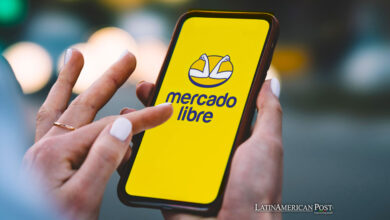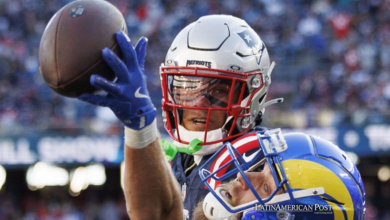The keys to the controversial documentary on the death of Diego Maradona
This documentary explores the darkest aspects of the death of the greatest soccer player of all time, including the dark conflicts with his inner circle.

When the material revealed in the documentary became known, outrage was generated among fans and those close to Maradona, which confirmed previous suspicions about the treatment that the former soccer player’s environment had. Photo: YT-Infobae
LatinAmerican Post | Ariel Cipolla
Listen to this article
Leer en español: Las claves del polémico documental de la muerte de Diego Maradona
2020 was marked by several events, but there was one that greatly affected the soccer world: the death of Diego Armando Maradona. Perhaps the best soccer player of all time, he was always the focus of numerous criticisms for his personality and his state of health, but during the weeks before his death, he looked really delicate.
At the time of his passing, numerous fans accused his circle of friends of the main culprits. This got to the point where they organized to demand justice for Maradona at the Obelisk, demanding trial and punishment of those allegedly guilty of his death.
All this occurs within the framework of a documentary-like investigation, carried out by Infobae and distributed by Arc Publishing of The Washington Post. With exclusive audios, the last days of the Ten were revealed. When this material became known, the outrage was generated among fans and those close to Maradona, who confirmed previous suspicions about the treatment that the former soccer player's environment had. Let's find out more about the documentary.
Maradona's controversial documentary
This documentary is really important to determine the cause of his death, since possible incriminating evidence came to light, which would add to the accusations of several of the suspects.
The main charge falls on possible negligence or the intention to induce Maradona into a weakened state. This obviously generated repercussion among his friends and family. For example, his former teammate from the Argentine National Team, Pedro Troglio, mentioned that he “broke out in anger” when he saw the documentary.
Precisely, Pedro Troglio admitted that he confirmed the suspicions he had: Maradona's environment wanted to put his lifelong friends and close friends against him. Along the same lines, another ex-partner of Maradona, Turco García, said that his entire recent circle should be “socially condemned”, at the same time in which he expressed himself in favor of the march to demand justice for the star.
These statements are given in the framework of the investigation of the documentary, which reveals the state to which Diego would have been subjected during the last days of his life: alcohol, marijuana and conflicts with his family. All this material was obtained through the San Isidro Justice, which is investigating the possible wrongful death, committed by negligence or omission, of the neurosurgeon Leopoldo Luque and the psychiatrist Agustina Cosachov.
That is, about 7,000 WhatsApp audios with the conversations between those involved were investigated, at the same time in which several personalities close to their environment were interviewed. Among them, stand out his ex-representative, Guillermo Coppola, and his ex-partner, Rocío Oliva, who also spoke out harshly against his inner circle.
Leer sobre los audios de Luque, Pomargo y Morla te da un asco impresionante. Diciendo que si Diego se iba de la casa se les cortaba la guita y el laburo.
Después testimonios en la causa contando la “dieta” que le daban a base de sandwiches de miga y osobuco con grasa.— Momo Geronimo Benavides M (@momorelojero) March 2, 2021
The main social suspicion falls on his lawyer, Matías Morla, who could have induced the recent mood of Maradona, who was found dead from heart failure and pulmonary edema on November 25, 2020. He was hospitalized to treat his addiction to alcoholism, after brain surgery that would not have worked properly, while he was taking medication that was contraindicated for his heart conditions, which added to his drinking problems.
Also read: Maradona vs. England: a key moment in Latin American culture
Precisely, in this fantastic audiovisual material, it is revealed that Morla asked Maradona to film videos showing that "he had no problems with alcohol", arguing that they were accusations by his family, that they wanted money from him. However, it is thought that it could have been the other way around: Morla would have judicially antagonized Maradona with his ex-partner and his daughters, in such a way that he could have control of his economic apparatus to do business with him.
The appearance of another figure in his circle was also known: Víctor Stinfale, CEO of the firm Speed, who would have used the image of the star to promote his energy drinks. Thus, the addiction to alcoholism, as the documentary shows, could have been induced to "dope" Maradona so that it would be much easier to obtain economic benefits.
Cárcel para Stinfale, Morla y Luque por usar y abandonar a Diego.
— Maradona Retro PICS (@MaradonaPICS) March 2, 2021
This is explained, for example, when Maxi Pomargo, lawyer Matías Morla's brother-in-law, asked that the daughters not have custody of Diego because they would lose all the economic benefits of being close to him, which suggests that his family has historically antagonized him. in various media crossovers. That is, everything would indicate that living with him was an economic issue.
Even Maradona's ex-partner, Claudia Villafañe, spoke about this documentary on América TV and commented that "Diego was kidnapped," while she thought that, now that the audios came out, "everything that happened is very clear." In other words, he blames his entire circle for inducing, in one way or another, a weakened state of health that could have resulted in his death.
It is even mentioned that, if Maradona had been treated in a psychiatric hospital to treat his addiction to alcohol, as his daughters wanted, he would have survived. In short, the documentary explores a little the controversies of the people who lived with Maradona during the last days and reveals a little how it could unleash future cases in Justice.





